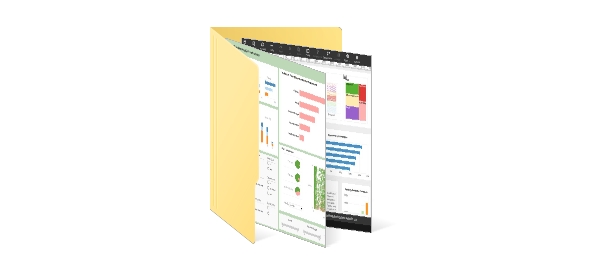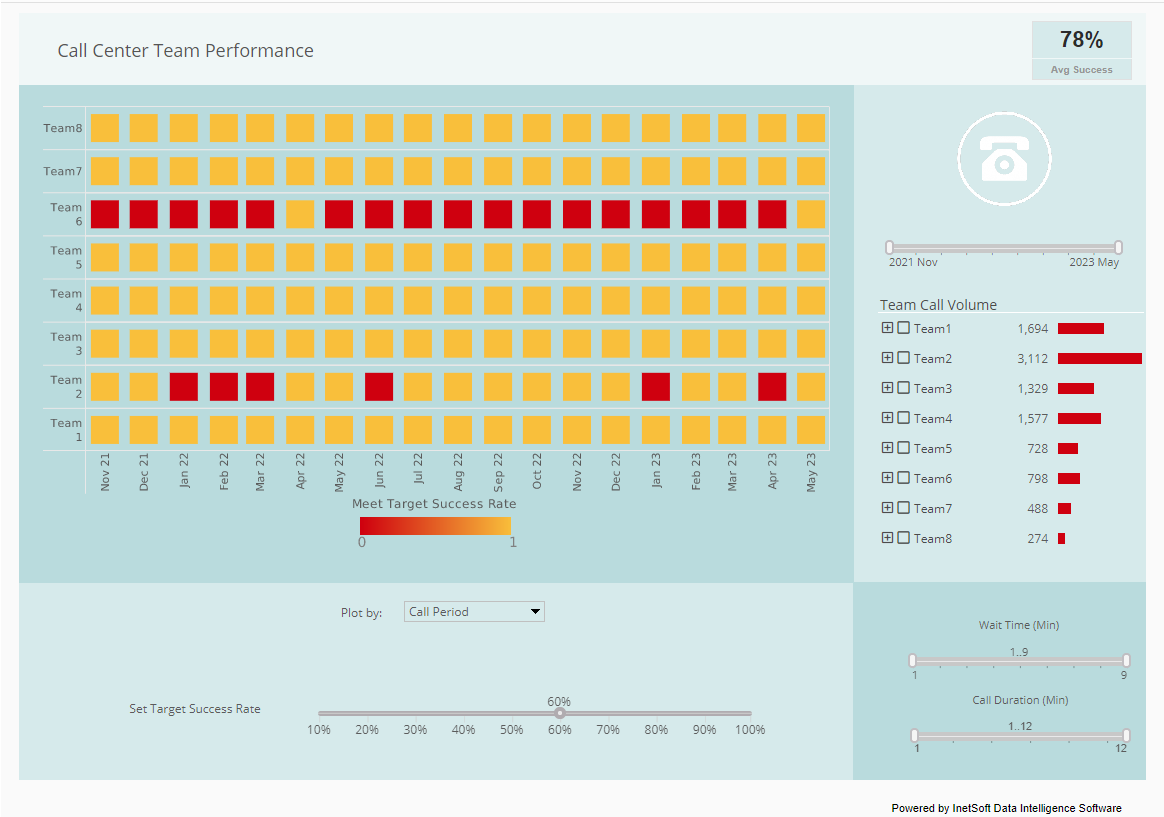An Effective Data Discovery Solution
This is the continuation of the transcript of a Webinar hosted by InetSoft on the topic of "Why You Need Data Discovery Software." The speaker is Abhishek Gupta, product manager at InetSoft.
From my perspective an effective data discovery solution comes down to the management of the data, and our platform’s speed and its ability to index and rapidly query information. But if you can build in processes that are compressed, it gives you the ability to do in memory analytics and process that information very quickly regardless of where it’s coming from, unstructured or structured, so that distinction doesn’t play so much a role, or at least it shouldn’t.
For the best practices for data discovery and Unified Information Access you need to enable users to work with the growing data and content with less IT involvements. It is a key point. So the best practice is make it easier and faster to incorporate new data sources. Let users personalize discovery and visualization. Choose tools that leverage the value of big data.
Looking at the kinds of data sources, they are growing. They are going to be important for decision makers in lines of business and throughout the organization. Establish managed self-service. And I think this is an area where IT certainly is important. To manage self service efforts, makes sure that the data is secure. Improve data quality.
| #1 Ranking: Read how InetSoft was rated #1 for user adoption in G2's user survey-based index | Read More |
Find and document repeatable analysis patterns so that once something is working in the organization, make it available to other users in the organization. That’s a good way to get the most out of it. This make a good segue for a discussion of the organizational change and cultural hurdles that we’re seeing in implementing these kinds of solutions.
Our customers tell us that organizational change is really important to whether a data discovery application or any new generation business intelligence tool is going to achieve its potential. An organization has to be ready to want to be an analytically driven organization. It has want to be a place where people are curious, want to get access to information, want to recognize that hey what we’ve done in the past has been great, and now we need to move forward.
Preparing for that organizational change or getting people on board to overcome cultural hurdles is a process, and it takes work and bringing in the right technology and the right process isn’t enough if the people are not on board as well. So there is a need for your organizations to be thinking about the people element. Some of the things we mentioned earlier are worth repeating. Getting fast and quick wins has the psychological benefit.
Seek success early, and seeing that it’s easy, and that change it doesn’t have to be hard. It won’t threaten your job, and you can be better. Those are all important aspects to plan as part of your effort to bring in a new generation of business intelligence into your organization. So I definitely appreciate that question, and we know it can be a significant part of the challenge, but it’s just like anything else, you plan for it, you take action around it, and you see results moving forward.
You absolutely have to have an organizational approach that embraces new sources of information and is very much engaged and interested in responding to the new and increasingly complex demands of their business for information. Fortunately most organizations now have missions or mandates to deal with structured and unstructured data, to deal with big data, to deal with the speed of information, to bring new sources of information on quickly.
When an IT organization has that mandate, it looks at tools that support UIA, or self-directed data access. Embrace those tools in a way for them to quickly deliver on that mission. You’ll make them heroes essentially to the organization and be able to bring these tools on line to make their jobs easier and create much greater value for their downstream business folks. The organizational the focus has to be there. That mission has to be there, but a lot of companies today have that mission. So we look at as a landscape that has continued to expand, and it’s fantastic.
If you look at bringing in a BI solution or BI stack into an organization and the cultural kind of hurdles that you may have to surmount or summit if you will, the reality is there has to be a change. There has to be someone who owns this process throughout the organization, and I think at least from my perspective, what we’ve seen is that if you get that quick win, you will quickly find that people will come out of the shadows and be interested and engaged about what is it that you’re doing and how you’re doing.
At least from our perspective what we’ve seen is that an initial deployment leads to additional deployments. Where the IT organization maybe somewhat wary about how or what you had in mind of what you had plan for this BI deployment, now it suddenly begins to turn and look at it for an avenue for them as well, to spread information about what’s going on within the organization and how better to manage profit. So I think what’s fun is that you’ll have that champion. That champion will bring a solution into the organization, and what happens from that moment forward, it’s a testament to the tool itself and what it’s capable of.
 |
View the gallery of examples of dashboards and visualizations. |
Case Study: The Department of Health and Human Services Utilizes InetSoft's Data Discovery Solution for Strategic Workforce Optimization
The Department of Health and Human Services (HHS) is one of the largest federal agencies in the United States, overseeing a wide range of public health programs and services. In response to federal budget constraints and efficiency mandates, HHS sought to implement a strategic workforce optimization plan that required major headcount reductions while ensuring that essential services remained unaffected.
Challenge HHS faced the complex task of reducing its workforce without compromising the quality of healthcare services, regulatory oversight, and public health initiatives. The agency required a data-driven approach to identify redundancies, optimize workflows, and enhance efficiency across multiple departments.
Key challenges included:
-
Data Silos: Information was scattered across multiple systems, making it difficult to gain a comprehensive view of workforce distribution and productivity.
-
Inefficient Processes: Manual reporting and analysis processes made it difficult to assess resource allocation effectively.
-
Risk of Service Disruptions: Any reduction in personnel needed to be carefully managed to ensure continuity of critical services.
-
Compliance and Transparency: Workforce reduction decisions needed to be justified with clear, data-driven insights to maintain regulatory compliance and stakeholder trust.
Solution To address these challenges, HHS implemented InetSoft's Data Discovery Solution, a powerful data mashup and visualization platform that enables organizations to integrate disparate data sources, conduct advanced analytics, and generate interactive reports.
The solution provided HHS with:
-
Comprehensive Data Integration: InetSoft's platform enabled seamless data integration from HR systems, financial records, operational metrics, and program performance databases, offering a unified view of workforce utilization.
-
Advanced Predictive Analytics: Using machine learning algorithms and trend analysis, HHS identified roles and departments where workforce reductions could be made with minimal impact on operations.
-
Workflow Optimization Tools: The solution analyzed process inefficiencies and recommended automation opportunities, reducing the dependency on manual labor and allowing for a leaner workforce.
-
Interactive Dashboards: Decision-makers were equipped with real-time insights into workforce performance, allowing for data-driven restructuring decisions.
Implementation HHS deployed InetSoft's Data Discovery Solution in phases:
-
Data Consolidation Phase: Integrated workforce, operational, and financial data from multiple systems.
-
Analytics and Modeling Phase: Conducted in-depth workforce analysis to identify inefficiencies and assess the impact of potential reductions.
-
Strategic Planning Phase: Used predictive models to simulate different reduction scenarios, ensuring the least disruptive restructuring path.
-
Execution and Monitoring Phase: Implemented workforce reductions while continuously monitoring service levels and operational performance.
Results By leveraging InetSoft's Data Discovery Solution, HHS achieved significant operational improvements:
-
15% Headcount Reduction with minimal disruption to public health services.
-
$120 Million in Cost Savings through optimized resource allocation and workflow automation.
-
Increased Efficiency as process automation reduced administrative burdens and improved response times for key services.
-
Enhanced Transparency and Compliance by providing data-backed justification for workforce decisions, minimizing legal risks and public scrutiny.
| Previous: Search in a Data Discovery Solution |
